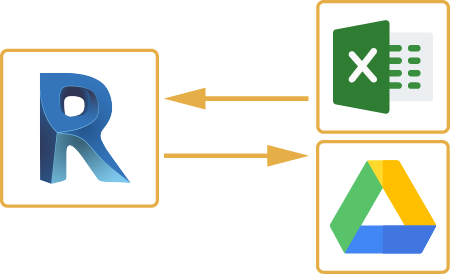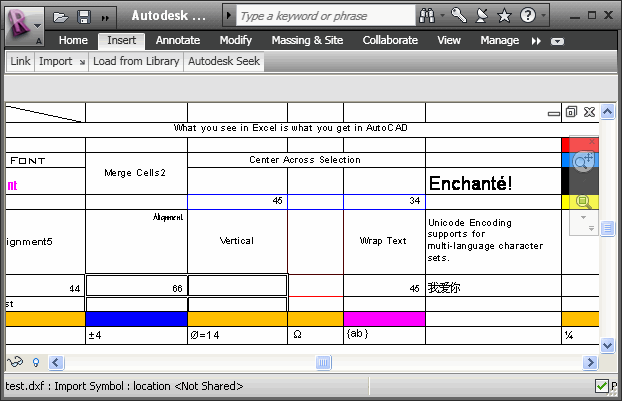Revit Plugins for Unleashing Your Design Possible
Revit Excel Assimilation Demystified: Enhancing Process for Enhanced Task Control
Look no additionally, since Revit Excel Integration is right here to debunk the process and enhance your jobs. In this write-up, we will certainly direct you with the relevance of Revit Excel Integration, show you just how to streamline workflows, and offer best practices for successful integration.
The Importance of Revit Excel Assimilation
You need to understand the value of Revit Excel integration to properly simplify your process and enhance job control. The combination of Revit, a powerful building information modeling (BIM) software, with Excel, an extensively used spreadsheet program, offers various advantages for architects, engineers, and building and construction professionals.

By incorporating Revit with Excel, you can remove hand-operated information entry and minimize the threat of errors. This not just conserves time however likewise ensures accuracy in your job documentation. You can upgrade data in Excel, and it will immediately upgrade in Revit, keeping uniformity throughout your job.
Furthermore, Revit Excel integration improves job sychronisation by enabling efficient collaboration amongst employee. With data synchronized in between Revit and Excel, everyone can access the most current details and collaborate flawlessly. This promotes smoother interaction, reduces problems, and improves overall job effectiveness.
Exactly How to Enhance Workflows With Revit Excel Assimilation
Enhance your procedure by perfectly linking Revit and Excel to enhance your operations. By incorporating these two powerful devices, you can enhance task sychronisation and boost performance in your work. With Revit Excel combination, you can quickly transfer data between the two platforms, allowing for seamless interaction and collaboration.

One more benefit of Revit Excel combination is the ability to create custom reports and evaluate information extra successfully. With Excel's durable features, you can do sophisticated estimations, develop graphes and graphs, and produce thorough records based upon the data from your Revit versions. This permits you to obtain valuable insights and make notified decisions throughout the job.
Enhancing Task Control With Revit Excel Combination
By effortlessly connecting your style software with effective information analysis devices, you can greatly boost the control of your jobs. Revit Excel assimilation allows you to simplify your process and boost project sychronisation by getting rid of manual information entry and minimizing mistakes. With this combination, you can easily move information in between Revit and Excel, guaranteeing that all job info depends on date and accurate.
One of the vital advantages of Revit Excel combination is the ability to import and export data between the two software application seamlessly. This indicates that you can easily import existing job data from Excel navigate here into Revit, saving you effort and time in coming back information. You can export project data from Revit to Excel, allowing you to carry out advanced analysis and estimations using the powerful functions of Excel.
Additionally, Revit Excel integration allows you to create vibrant web links between the 2 software (revit add ins). This suggests that any type of changes made in Revit will instantly upgrade in Excel, and the other way around. This ensures this page that all project stakeholders are collaborating with one of the most current info, enhancing task control and lowering the threat of errors
Overcoming Difficulties in Revit Excel Integration
When getting over obstacles in the integration of Revit and Excel, it is very important to ensure seamless information transfer and decrease errors. One typical difficulty is the compatibility of data formats between Revit and Excel. To tackle this, you can utilize plugins or add-ins that help with the conversion of information from one layout to one more. These devices aid maintain the stability of the information during the transfer process.
Another obstacle is the lack of synchronization between Revit and Excel. It's important to develop a clear workflow that makes certain both platforms are upgraded in real-time. This can be accomplished by making use of cloud-based cooperation devices or developing a system for regular information syncing.
Dealing with large datasets can also be bothersome. When it comes to handling huge amounts of data, revit and Excel have different capabilities. To conquer this challenge, you can split the information right into smaller sized, workable pieces or make use of data filtering system methods to concentrate on specific areas of rate of interest.
Last but not least, human mistake can lead to discrepancies between Revit and Excel data. It's important to educate employee on the combination process and develop quality assurance actions to catch any type of errors. Routine audits and cross-checks can aid recognize and rectify any type of disparities.
Best Practices for Successful Revit Excel Integration
To make sure successful combination of Revit and Excel, it is essential to follow some best practices that will certainly help streamline your operations and minimize errors. Most importantly, always start by producing a clear and organized folder framework for your task data. When needed, this will make it much easier to situate and update the needed documents. Additionally, when linking Excel information into Revit, make certain that the information is tidy and free from any type of format concerns that can trigger errors. Usage consistent calling conventions for your Excel columns and worksheets to prevent complication.
Another vital method is to on a regular basis upgrade your Excel information in Revit. This can be quickly achieved by developing a clear procedure for upgrading the connected information. Make it a behavior to examine and update the information at regular intervals, particularly when modifications are made to the task. This why not try these out will assist maintain your information precise and as much as date.

Verdict
So, there you have it - revit Excel assimilation does not need to be a difficult task. By streamlining your operations with this effective mix, you can improve task sychronisation and accomplish greater efficiency. Keep in mind to overcome any challenges that may develop and comply with best methods for successful assimilation. With revit Excel combination debunked, you'll be well on your way to taking full advantage of the possibility of these devices and taking your tasks to new heights.
You can export your Revit timetables to Excel, make modifications or updates in Excel, and after that import the updated data back right into Revit with just a couple of clicks. Revit Excel integration allows you to improve your workflows and enhance project sychronisation by getting rid of hand-operated information entry and reducing errors. With this combination, you can quickly transfer information in between Revit and Excel, making sure that all project information is up to day and precise.
You can export project data from Revit to Excel, enabling you to carry out advanced evaluation and calculations utilizing the effective functions of Excel.
Additionally, when linking Excel data into Revit, guarantee that the information is tidy and complimentary from any kind of formatting issues that can cause errors.